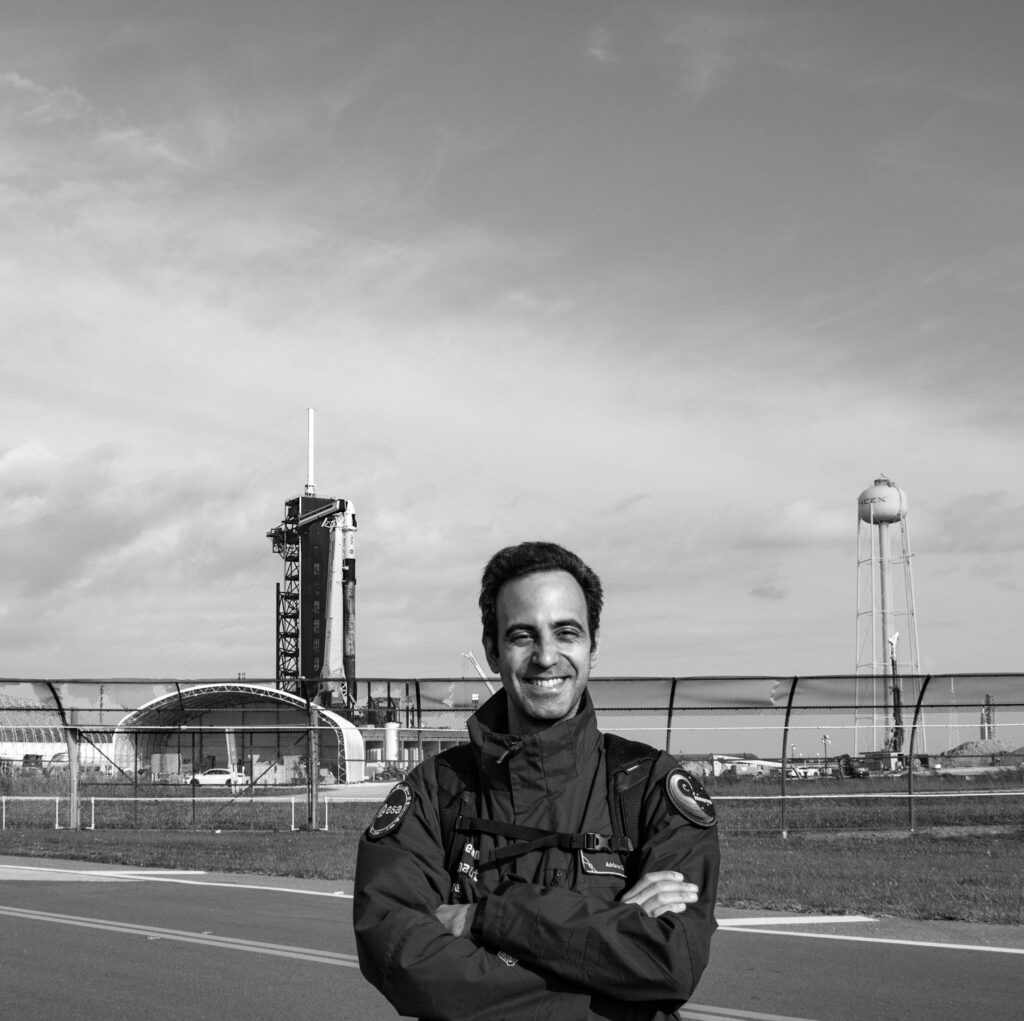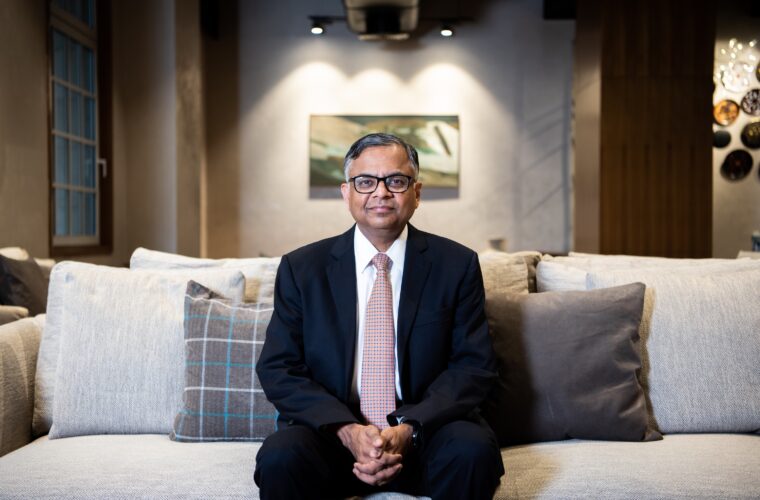From Earth to the Stars: Adrianos & Stan on the future of space medicine
Please tell us a bit about your background
Stan: Born in the Netherlands 29 years ago, I was named Konstantinos. Since “Konstantinos” was too difficult for the Dutch to pronounce, it became “Stan.” With a Greek father and a Dutch mother, I have always been fascinated by languages and cultures. As a child, my grandfather would tell me stories about the Roswell UFO incident, sparking my curiosity about the universe. By the age of 6, I had a telescope in my room, observing the Moon in hopes of catching sight of a spaceship. After finishing med school in 2021, I realized that the mysteries of the universe still made my heart race. I began exploring ways to combine medicine with space exploration and soon discovered that it was quite a niche field.
One day, I came across Adrianos on LinkedIn. I immediately recognized myself in him: a medical doctor from Greece working for the ESA! I reached out, and after a great conversation, he recommended that I contact MEDES, the Space Medicine and Physiology research centre in Toulouse. That’s where it all began for me…
Adrianos: In my case, born and educated in Greece, after my medical studies, I followed my somewhat wild passion for space, studying for my Master’s at the International Space University (ISU). This path led me to work as a research medical doctor in the isolation of Antarctica for more than a year and then to be hired by MEDES, the French Institute of Space Medicine and Physiology that Stan just mentioned.
Our role at MEDES is to support medical research in a space analogue environment in Toulouse. Since 2018, I have been seconded to the Space Medicine Team of the European Space Agency (ESA), having contributed to 6 missions of European astronauts to space. In 2022, I had the honour of successfully completing the pan-European astronaut selection procedure, which occurs once every 13 years. Thus, I hope to represent Greece and Europe in space one day. I had the pleasure of eventually meeting Stan at Toulouse when he got his post there too; that makes two Greeks working in space medicine for MEDES!
Can you please tell us about your combined research?
Stan: Adrianos and I both worked at MEDES. At different times, we conducted similar studies called bed rest, which simulate a microgravity environment for the human body. For me, Adrianos has always been my mentor and guide in the field of space medicine, kind of comparable to a Greek Godfather!
We are currently collaborating on two research projects. The first one focuses on psychological challenges in Antarctica’s extreme environment. Antarctica is often used as an analogue for space missions due to its similarities in aspects such as isolation and confinement. Our goal is to develop effective countermeasures to protect astronauts’ mental well-being during long-duration space travel.
The second research project we are working on involves the headward fluid shift that astronauts experience. I’ll go into more detail later, but in short, we are investigating how the cardiovascular system adapts to microgravity.
Finally, we are collaborating on a variety of projects, bringing together international individuals with different backgrounds, seeking to achieve equal distribution within the European space industry as much as possible. Many of these scientists are based in Greece.
Adrianos: Stan may be younger than me but certainly more well-versed in research! Myself so far, I am mainly on the operational side of space medicine. I did execute several research experiments in Antarctica, however, and I did help implement some at the “Space Clinic” in Toulouse. As Stan said, both of these environments are considered “space analogues” because they resemble some of the hardships of life in space.
The experiments I helped with range from how our metabolism changes in adverse conditions to the deconditioning of muscles and bone tissue and from the impact of isolation on sleep and psychology to team dynamics and brain function. What is essential for us is that the knowledge stemming from medical research in space and space analogues is applied to medicine on Earth and helps raise our living standards. Several high-level scientists are active in this sector in my home country, Greece, and we look forward to more opportunities for them to contribute to European space research. May I also add that there is published evidence indicating that when a country participates in such research, it gains significant returns, not only in science but also in terms of economy, education, innovation and motivation of its citizens.
What exactly is space medicine, and how does it differ from traditional or terrestrial medicine?
Adrianos: In terrestrial medicine, the doctor’s objective is to reinstate several patients to good health after injury or disease; in space medicine, the objective is to safeguard the health of one or only a few individuals and keep it to the best state possible. Space medicine is thus more about prevention than treatment, while terrestrial medicine is still more about treatment than prevention.
Space medicine is more comprehensive than a specific medical speciality of classical medicine: the doctor has to conduct medical check-ups in person before the space mission and via telemedicine during the mission, but also check the results of medical exams of a wide range, pay attention to the astronaut’s workload and sleep, collaborate with psychologists and nutrition specialists, and monitor values such as the level of CO2 or radiation on the space vehicle. I like to think it is a function similar to Occupational Medicine, albeit adapted for off-planet.
Stan: Adrianos mentioned, of course, the extensiveness of space medicine as a speciality. I would like to add that terrestrial medicine focuses on patients in a normal environment, addressing what is often referred to as an “abnormal” health state (pathophysiology) in a typical setting. In contrast, space medicine focuses on healthy individuals (astronauts) dealing with physiology in an abnormal environment.
In space medicine, our primary goal is to prevent the risks and hazards associated with space travel. However, astronauts may also require treatment in some instances.
What motivated you to specialize in space medicine?
Stan: I wouldn’t say I’ve specialized in space medicine just yet, but my main drive has always been the pioneering aspect. Practising medicine in a space environment offers countless opportunities to push human boundaries. Beyond the innovative side, I greatly value the international and multidisciplinary nature of the space industry. Knowledge from radiation, engineering, physics, physiology, medicine, aviation, communication, and psychology converge to create one incredible scientific cocktail. Beyond the scientific and exploratory aspects, some of us quietly harbour aspirations of planting a blue-white coloured flag on Mars one day…
Adrianos: In my case, I tried to intermarry my humanistic love for medicine and my profound passion for exploration and what lies beyond our planet. I recall the immense charm that the night sky cast on me the first time I was counting shooting stars with my father on a hot Greek summer evening. And I did answer my internal call to work with people in a science like medicine. So, at the end of my medical studies, I took the chance to try this atypical but unique path, and so far, it has been rewarding.
How does microgravity impact the human body over short and long durations?
Stan: To begin with, the effects of microgravity on the human body and mind are far from fully understood. The impact of microgravity varies significantly between short-duration and long-duration space flights, affecting various physiological systems. Understanding these differences is crucial for preparing astronauts for space missions and managing their health effectively.
Short-duration spaceflight generally refers to missions lasting up to 30 days, while long-duration spaceflight refers to missions longer than 30 days.
On a cardiovascular level, changes in fluid distribution during shorter missions typically resolve relatively quickly after returning to normal gravity. However, in longer missions, fluid redistribution can lead to more persistent issues, such as effects on vision and increased pressure in the head.
Regarding the musculoskeletal system, which includes bones and muscles, the effects of short-term microgravity are relatively mild compared to longer-duration missions. However, significant challenges arise in long-duration spaceflight, including the loss of bone density and muscle mass. The lack of gravitational resistance leads to considerable muscle wasting, necessitating intensive exercise routines to counteract these effects. Long-term exposure to microgravity results in pronounced bone loss, increasing the risk of fractures. Recovery of bone density after returning to Earth can be slow.
Other systems affected by microgravity include the neurosensory system, psychological health, the immune system, metabolism, and ocular health. In general, the longer a space mission, the more the body is impacted and the greater the challenges in mitigating these effects.
Adrianos: The moment we cross into space, we experience a lack of gravity or, in the case of the Moon, gravity weaker than the Earth’s. There are immediate effects, such as that the distribution of fluids in our body, which Stan mentioned and which we try to prevent in astronauts. However, we also observe latent effects: To the loss of bone density and muscular mass, I would add the effect of living in the somewhat austere confines of a space vehicle and the cumulative effect of radiation and associated risks.
The difference between short-duration missions and long-duration ones is the level of countermeasures we apply to mitigate the impact on health: the longer you stay in space, the more you need to protect your body against adverse effects in order to recover once you are back on Earth.



What are the primary health risks faced by astronauts during long-duration space missions?
Adrianos: I would say that radiation and the need for relative medical autonomy in case of an accident, especially as we venture further away from our planet, for example, to the lunar surface, pose significant threats. The effect of isolation with a small crew coupled with the high workload of implementing as much science as possible is also something that needs to be monitored.
In a future 3-year mission to Mars, we need to consider that even with countermeasures in place, astronauts are expected to lose an important percentage of their muscle mass and bone density – so it may be challenging to operate on the Martian surface, where they will meet gravity again. Recently, thanks to human presence and research in space, we have discovered two new risks for the human body: SANS, impacting visual acuity, and Venous Thromboembolism in healthy people, as are today’s astronauts. We need to delve deeper and understand how we can protect future crews from these.
Stan: I also believe space radiation is one of the primary health hazards in space. Beyond Low Earth Orbit, space radiation can greatly endanger astronauts, increasing the likelihood of radiation sickness, a heightened lifetime risk of developing cancer, adverse effects on the central nervous system, and the progression of degenerative diseases. Much research is still needed to understand the effects of space radiation during long-duration missions fully.
Finally, the longer we travel in space, the greater the chance that medical incidents will occur. This means we must be even more prepared for the variety of health risks in space and be able to take care of our astronauts from a distance.
What role does telemedicine play in space missions, and how does it function differently from Earth-based telemedicine?
Adrianos: It is paramount to monitor astronauts’ health while in space. We have a private video call at least once a week to tele-examine, discuss with the astronauts, and offer advice on any health issues. To an extent, astronauts do receive some training on how to deal with medical emergencies, but telemedicine enables us to guide them from the ground when necessary. We also receive and analyse data from all medical exams that they conduct on one another if in space for a long time. I’d say the only difference with Earth-bound telemedicine is that for lunar missions, we need to put new satellites in place to communicate with astronauts on the Moon and thus conduct telemedicine; on Earth, most of the globe already enjoys an acceptable level of coverage.
We learn a lot from space telemedicine for the ground: for example, a French protocol to remotely guide an astronaut to perform an ultrasound on another member of their crew, even if the astronaut has no training in this procedure, is something that can be applied to remote areas on the Earth with limited medical coverage – and being Greek I am thinking about the island population, especially in winter when weather conditions can be harsh and prevent medical evacuation. Telemedicine could help in a timely diagnosis and advice for treatment in such cases.
Stan: As Adrianos already mentioned, telemedicine is essential in space missions. It differs, however, significantly from its Earth-based application. On Earth, telemedicine enhances healthcare through technologies like smartwatches and video consultations. However, telemedicine is crucial for astronaut health management in space due to the isolation and distance from Earth.
Telemedicine provides the primary means of medical support in space, addressing challenges such as communication delays and limited bandwidth. When humans venture further than the Moon, systems will have to handle time lags of several minutes and offer autonomous diagnostics and decision support. Continuous remote monitoring with specialised devices is essential, as direct medical intervention is impossible.
While telemedicine on Earth is a valuable supplement to traditional care, it is indispensable in space for enabling long-duration missions and ensuring that astronauts receive the necessary medical support in the unique environment of space.
In this regard, advancements in telemedicine can support future terrestrial medicine in coping with the increasing pressure on the healthcare system.
What role do AI and robotics play in the future of space healthcare?
Stan: AI and robotics are set to revolutionise space medicine by enhancing diagnostic accuracy and creating tailored treatment plans for the unique challenges of space travel. AI will analyse complex medical data and provide real-time advice, addressing communication delays with Earth.
Robotics will complement this by performing precise medical procedures and routine tasks, reducing the need for human intervention. It could even play a future role in remote space surgeries.
Together, AI and robotics will increase autonomy in space healthcare, which is essential for maintaining astronaut health on long-duration missions and managing medical emergencies.
Can you explain some of the current research focused on advancing space medicine?
Adrianos: We are gradually developing new medical protocols to use on and around the Moon. This is being conducted at a European level and in collaboration with all partner states participating in lunar exploration during the next decade. Stan may provide more examples regarding basic and applied science.
Stan: At the moment, different studies are being performed in a variety of simulated mission constraints on the Earth, which are called, as we said, “analogues”.
Factors such as communication among astronauts and the ground team supporting them, psychology in isolated settings, dietary challenges, and medical emergencies are being investigated.
Other studies include Earth-based simulations to replicate microgravity, such as parabolic flights, bed-rest studies, and dry immersion studies. These enable us to research (certain) effects of microgravity without needing to enter space. This is helpful since performing experiments in space is often expensive and limited: equipment and technology are often difficult to bring on board the space station.
These different studies focus on the main hazards associated with space travel. One topic frequently addressed in research is ocular changes as a consequence of space travel.
Given the different types of travellers, how might space tourism impact the need for space medicine?
Stan: We may have older space travellers too. Increasing age generally comes with an increase in the frequency of health issues such as cardiac arrhythmia, a decrease in vascular resilience, vertigo, and less muscle and bone mass to compensate for the wasting in space. At this point, space medicine research mainly focuses on healthy, relatively young individuals. Future research will slowly start to include other parts of the population. For instance, ESA recently launched a program to fly into space astronauts having a physical disability.
Adrianos: I would take you back to a photo I really like, and it depicts Stephen Hawking taking part in a parabolic flight, a flight where the plane conducts a controlled free fall to simulate the lack of gravity in space. Stephen Hawking had fragile health, yet this picture shows us in the best way that with the right precautions in place, the space sector can open up to more and more people. Not only tourists but also researchers, more of them. We expect the medical criteria to become less stringent in the future, and as Stan pointed out, in Europe, we have the first great example of a professional astronaut with a disability.
Naturally, space medicine has to evolve in order to support people with health conditions that will venture into space in the near future: for example, what about diabetes in space? Again, the advantage here is that the more we learn about such conditions in the unique conditions of space, the better we understand how the human body functions even at a cellular level and the higher the chances we will be able to reverse such conditions in the future.



